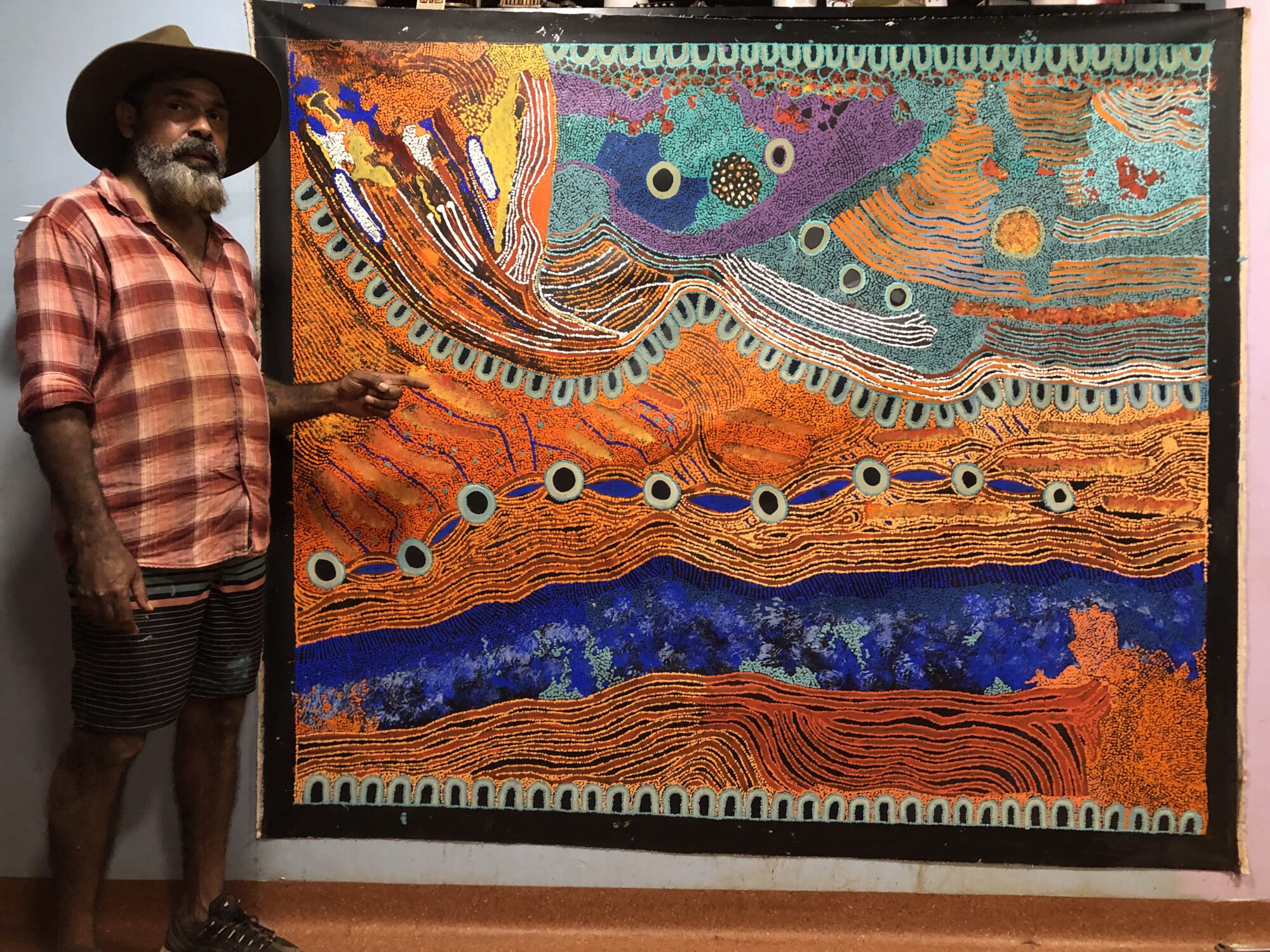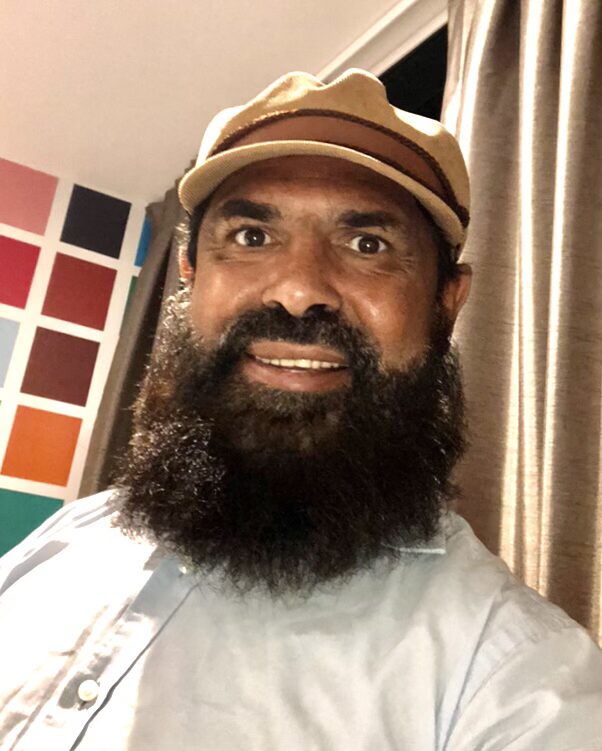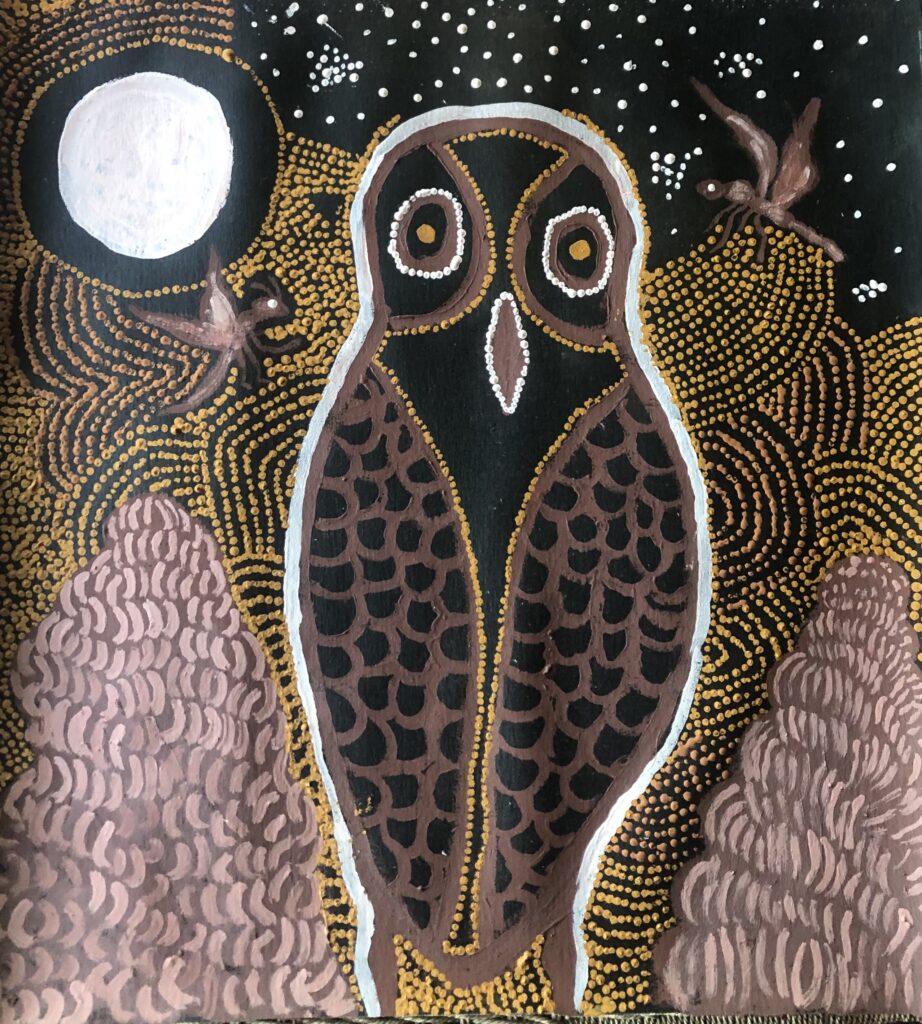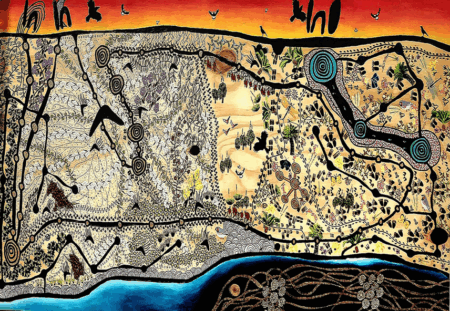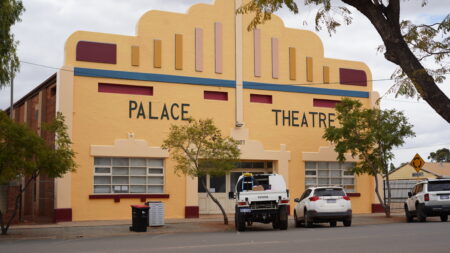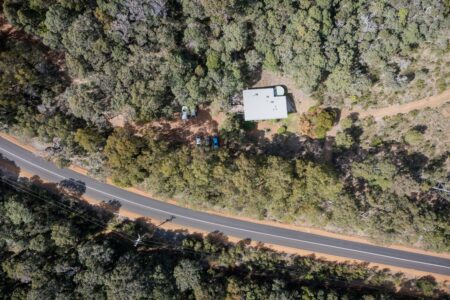For the month of July to align with NAIDOC week, we are running a series of stories featuring a number of First Nations artists for our ‘Artist Of the Month’ program. This piece is about the legendary Lloyd Kwilla.
There’s something about the way Lloyd Kwilla speaks about his art that transports you immediately to the red sand of the desert. His words, like his paintings, carry the weight of generations – storytelling that refuses to be forgotten.
“I think of my people, you know, and how that story is gonna continue on even though they’re gone. And I’m carrying that story,” Lloyd says, his voice carrying the cadence of someone who understands the responsibility of cultural custodianship.
Lloyd’s professional artistic journey began in 2004 when he travelled to Sydney, following in the footsteps of his father, Billy Joongarra Thomas, a renowned artist who worked with Red Rock Art in Kununurra. Art was an early education for Lloyd though, and something he enjoyed from childhood.
“Growing up, I didn’t have a big education, you know, so I got into art. I was good at it,” he explains with disarming simplicity.
His connection to Country runs deep. Lloyd comes from his grandmother’s land in the Great Sandy Desert. He grew up in Christmas Creek in the St Georges Ranges, surrounded by family and culture, though he now lives at Pandanus Park Community.
After his father’s passing Lloyd stepped away from art, and turned to work in the mines. It wasn’t until COVID hit that he returned to picking up his creative passions again, making boomerangs and paintings that continue the stories of his ancestors.
What makes Lloyd’s work distinctive is both technique and intention. His intricate paintings can take up to four months to complete. Each canvas shares stories of his father, uncle and grandfather that Lloyd channels through his brushwork.
“It’s not the acrylic or the design,” he insists. “It’s the story of the people and the area. One that has been given from generation to generation.”
Recently, Lloyd spoke at a climate change conference in Brisbane, where he found himself trying to translate Indigenous connections to Country to an audience that often sees land through the lens of commercial opportunity.
“How do I convince the audience to see through my eyes and through my ancestors? Where they see opportunity for industrial revolution and how to create income through land, we see differently. We see Country. It’s so much more than what you take from it.”
This philosophy extends to his current work with Pat Riley, as both work together to develop cultural tourism around the Fitzroy River. Their vision is to take visitors beyond traditional history into a more meaningful understanding of place.
“Non-indigenous people sometimes look at history on paper. Why not walk with an Indigenous person and listen to history? Feel the country, walk and feel the sand, and listen to the river itself.”
In his current work, Lloyd faces the challenges that come with creating art in remote areas. “It’s 170 bucks for a tin of paint in the Kimberley, and when I bought it in Sydney it was $150 for the freight,” he explains, highlighting how difficult it is to access basic art materials.
This scarcity has led Lloyd to embrace traditional methods, painting the desert Country with ochre he’s created that represents the Kimberley. He’s been experimenting with these natural pigments, collecting colours directly from the landscape: black from burned trees, white from hill country, red from the river, and yellow from plain country.
With six grown children, Lloyd’s focus now is on knowledge-sharing and creating sustainable opportunities for Indigenous people to generate income while caring for Country.
“Our goal is to do something that could generate money and income for the Indigenous people in this area in a way that they can look after their country,” he explains.
As NAIDOC Week approaches, artists like Lloyd Kwilla remind us that art is about continuity, responsibility, and the act of keeping stories alive when the storytellers themselves have returned to Country. And it’s about acknowledging these artists. Offering ongoing advocacy and support.
Posted in Artist Profile, First Nations, Stories.

